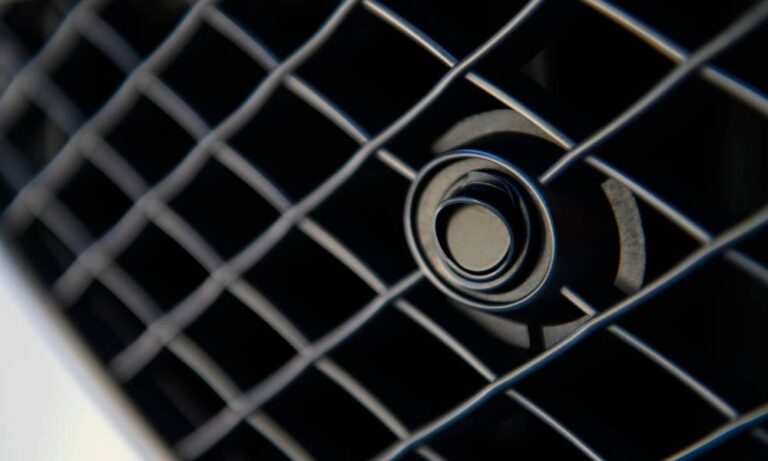In this comprehensive guide, we will walk you through the...
The Benefits of Condensation Sensors in Cars

As technology continues to advance, automobiles are becoming smarter and more sophisticated. One area where significant improvements have been made is in the realm of safety and convenience features. Condensation sensors, a relatively recent addition to modern cars, are a prime example of this progress.
These sensors detect the presence of condensation on the windows and windshield, enabling the vehicle to take appropriate actions to maintain optimal visibility and ensure the safety of the driver and passengers. In this blog post, we will explore the benefits of condensation sensors in cars, discussing how they contribute to a safer and more comfortable driving experience.
Advantages Of Condensation Sensors
1. Improved Visibility
One of the primary advantages of condensation sensors is their ability to enhance visibility while driving. Condensation on the windshield and windows can severely impair the driver’s line of sight, especially in adverse weather conditions. In the past, drivers had to manually operate the defrosting systems to clear the fog or rely on guesswork, which posed a significant risk to safety.
With condensation sensors, however, the system can automatically detect the presence of condensation on the glass surfaces. Once detected, the sensors can activate the appropriate measures to clear the fog or moisture, such as turning on the defrosting elements, adjusting the air conditioning, or directing warm air onto the windshield. This proactive approach ensures that the driver maintains a clear and unobstructed view of the road, reducing the likelihood of accidents caused by poor visibility.
2. Enhanced Safety
Condensation sensors contribute to overall road safety by minimizing distractions and allowing the driver to focus on the task at hand. When condensation is present on the windshield, drivers often find themselves constantly adjusting the defrosting settings or manually wiping the glass, diverting their attention from the road. This distraction can lead to delayed reaction times and an increased risk of accidents.
By automating the process of defogging or defrosting, condensation sensors alleviate the need for manual intervention. The driver can concentrate on driving, making split-second decisions, and responding to potential hazards without any added distractions. By promoting a safer driving environment, condensation sensors play a crucial role in accident prevention and the overall well-being of all road users.
3. Energy Efficiency
In addition to safety benefits, condensation sensors can also contribute to energy efficiency in vehicles. Traditional defrosting methods, such as using the car’s heating system at full blast, can consume a significant amount of energy, negatively impacting fuel economy and increasing greenhouse gas emissions. Condensation sensors help optimize the use of resources by activating the defrosting or defogging mechanisms only when necessary.
By accurately detecting the presence of condensation, the sensors can activate the defrosting system for the required duration, preventing unnecessary energy consumption. This targeted approach not only reduces the vehicle’s carbon footprint but also helps maximize fuel efficiency, resulting in cost savings for the driver and a reduced impact on the environment.
4. Enhanced Comfort
Comfort is a key aspect of the driving experience, particularly on long journeys or during adverse weather conditions. Condensation sensors contribute to enhanced comfort by maintaining a pleasant cabin environment for the driver and passengers. By continuously monitoring the moisture levels on the windows and windshield, the sensors can adjust the climate control system to prevent excessive condensation buildup.
Excessive humidity levels inside the car can lead to discomfort, including foggy windows and a clammy interior. Condensation sensors can work in tandem with the climate control system, adjusting temperature, humidity, and air circulation to minimize condensation and maintain a comfortable environment. This not only ensures a more enjoyable ride but also prevents the growth of mold or unpleasant odors caused by excessive moisture.
5. Future Potential and Integration
The integration of condensation sensors into automobiles opens up a realm of possibilities for future advancements in automotive technology. As the sensors become more sophisticated, they can be paired with other smart features to enhance the overall driving experience. For instance, in combination with rain sensors, condensation sensors could automatically close windows or adjust the wipers’ speed to adapt to changing weather conditions.
Furthermore, as self-driving technology continues to evolve, condensation sensors can play a crucial role in autonomous vehicles. Clear visibility is paramount for the proper functioning of autonomous driving systems, and condensation sensors can ensure that the sensors and cameras used for self-driving capabilities remain unobstructed and fully functional, even in challenging weather conditions.
Conclusion
Condensation sensors have emerged as a valuable addition to modern vehicles, providing numerous benefits to drivers and passengers alike. By improving visibility, enhancing safety, promoting energy efficiency, and enhancing comfort, these sensors contribute to a more enjoyable and secure driving experience.
As automotive technology continues to evolve, condensation sensors have the potential to integrate with other advanced features, further revolutionizing the way we drive. With their proactive approach to combating condensation, these sensors are undoubtedly a welcome advancement in the automotive industry, paving the way for safer and smarter cars on our roads.
Popular Searches
Audi Windshield Replacement in Santa Clara County
Auto Car Window Tinting in Santa Clara County
Auto Glass Repair and Replacement in Santa Clara County
Auto Glass Repair in Santa Clara County
BMW Windshield Chip Repair in Santa Clara County
BMW Windshield Repair and Replacement Services in Santa Clara County
Car Window Repair in santa clara
Car Window Repair in Santa Clara County
Commercial truck windshield replacement
Dodge Windshield Repair and Replacement Services in Santa Clara County
Dodge Windshield Replacement in Santa Clara County
Glass repairs for cars near me
Honda pilot windshield replacement cost
Honda Windshield Repair and Replacement Services in Santa Clara County
Honda Windshield Replacement in Santa Clara County
Hyundai Tucson windshield replacement
Hyundai Windshield Repair and Replacement Services in Santa Clara County
Hyundai Windshield Replacement in Santa Clara County
Jeep Windshield Repair and Replacement Services in Santa Clara County
Jeep Wrangler Windshield Replacement in Santa Clara County
Kia Windshield Repair and Replacement Services in Santa Clara County
Kia Windshield Replacement in Santa Clara County
Mobile Auto Glass in Santa Clara County
Mobile Auto Glass Repair in Santa Clara County
Mobile glass replacement near me
Same day windshield repair near me
Toyota Camry side mirror glass replacement
Windshield Calibration in Santa Clara County
Windshield Chip Repair in Santa Clara County
Windshield chip repair near me
Windshield Repair and Replacement Services in Santa Clara County
Windshield Repair and Replacement Services Near Me
Windshield Repair in Santa Clara County
Windshield repair service near me
Windshield Replacement Near Me
Windshield Replacement Services in Santa Clara County
Read more Articles
How Heads-Up Displays Improve Driver Awareness and Reduce Distractions
In this comprehensive guide, we will walk you through the...
The Role of Front Collision Sensors in Preventing Accidents: A Lifesaving Technology
In this comprehensive guide, we will walk you through the...



